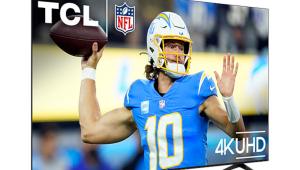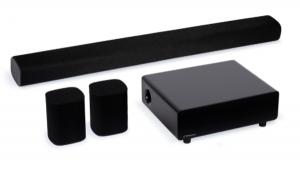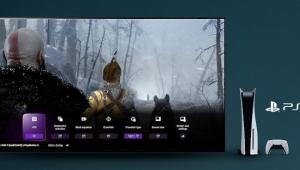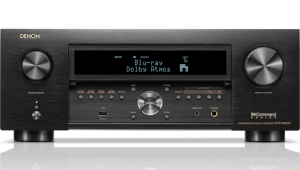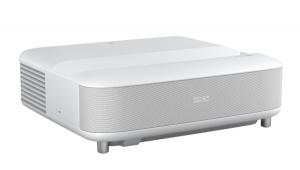From struggling to strum a single chord to rocking out flawless solos, my journey from zero to guitar hero has been life-changing. Countless hours of practice, patience, and passion brought the dream to life. I even found some great inspiration through https://nsfasonline-application.co.za/ while exploring online resources.
From Zero to Guitar Hero

Through with music games? Gone as far as you can with Guitar Hero? (There's always someone willing to go further - but that's not for you). Time to dust off that axe that's taking up space in the closet, plug it into your computer, and learn to play for real, once and for all.
Plug it into your computer? Yep, you heard me right.
Sure, laptops and tablets have changed the way we listen to music, but maybe even more important is how they've changed the way we make it. It's not just that the sounds we hear are crafted - at least in part - by software, but recording, production, "playing" - they've all been democratized, made accessible to the masses in a way nobody could have imagined 20, or even 10 years ago. Learning to make music's become a matter of downloading apps, reading manuals, experimentation.
But what about those of us over a certain age or of a certain inclination (and you know who you are)? The electric guitar is - and will remain - the iconic instrument of rock, even for musicians who've spent their careers behind samplers and computers.
But talent, purists hold, is given by a higher (or lower) power, and technical ability comes at the cost of a lifetime of commitment; honed by a spell or three of hard living. What if you never got down to the crossroads? What if you never put in those 10,000 hours? Is there hope?
Guitars are everywhere - you don't even have to venture into a music store these days. But if you're looking to learn (or build on what you know), there's an app for that.
Optek Music Systems Fretlight Guitar
The Fretlight guitar ($399–$699, store.fretlight.com), developed back in 1989 by Rusty Shaffer, is an ordinary enough appearing instrument that aims to turn music education on its head.
Fretlight models, available in a range of familiar Fender-inspired guitar and bass designs, feature an illuminated fretboard. At each fret position six red LEDs are embedded in a polymer fingerboard (the feel is vaguely reminiscent of ebony). Quality is at least on par with the bulk of today's mass-produced instruments, which is to say very high - twenty years ago, you would have paid a lot for something that played this nicely.
Fretlight's been in business since 1989; the instrument's been evolving ever since, but the big news about this year's model is compatibility with the popular Guitar Pro 6 ($99.99, available separately from Fretlight) tablature/notation software, which opens up a whole world of legitimately (and perhaps not-so-legitimately) downloadable sheet music to the aspiring axe-slinger. GP6 also adds some performance-oriented functions that more advanced students will appreciate - a scale mode lights up more than 400 scales along the fretboard, making solo practice over chord progressions simple; a chord mode does similarly for, well, chord shapes across the instrument.
Guitar Pro 6 also makes it easy to create your own Fretlight-ready scores, should you get to that point - you can trade tabs online with other enthusiasts, give illustrated demos to your bandmates, practice your own work at a variety of tempos. The possibilities are endless.
Initially, the teaching end of the Fretlight system was dependent on a suite of special-purpose Fretlight-branded applications - Fretlight Lesson Player, Improviser, Song Player and the Video Player (the last one available only in the PC version; Mac users have to do without video). On the PC side, everything's accessible through a central launchpad called Fretlight Studio; Mac users will have to use the apps independently (though Mac video support and a unified Studio are under development). The Video Player does give you access to a library of Fretlight-ready video content (1.4 GB worth of material is freely downloadable, additional titles - offering extended lessons in general concepts, the styles of guitar heroes like Eric Clapton, or breakdowns of classic albums like Dark Side of the Moon - are generally in the $20 range), however, so there's a compelling case to be made for the Windows version, at least at the moment.
The software package is still included with current Fretlight instruments; you'll also find a collection of learning materials - a selection of video lessons, both longer introductory sessions covering basic and intermediate guitar concepts, and short takes demonstrating various approaches to riffs, licks, and fingering. There's also a library of demonstration songs and basic vamps in a variety of styles, meant for practicing solos. It's a lot of material.
The Windows-side integration is pretty nice; once the Mac version catches up, beginning or intermediate guitar students on either platform should be able to get quite a lot out of the Fretlight guitar and software. The only real downside of the Fretlight apps (and this is one area where shelling out the additional cash for Guitar Pro 6 makes sense) is that they require special Fretlight-enabled MIDI files Popular tunes in Fretlight-ready MIDI versions are available for $2.99/each from the Fretlight store.
Plugging In
The Fretlight guitar's attached to your computer via an 8-pin connector. A DIN cable (loosely resembling a MIDI cable, though it's not the same protocol) terminates, following a Y-splitter, in a USB connector on the computer end and a jack for a programmable footswitch. The connection doesn't carry audio, however - you'll use a separate guitar cable for that. And there's no amp-and-cabinet simulator integrated in the software.
This is one area in which the Fretlight system may be showing its age - you have to bring your own amplification to the party; in a system aimed (at least in part) at beginning guitarists this would be a convenient add, saving significant expense and an extra cable run. Given that Guitar Pro 6 includes synthetic and sampled accompaniment (some of it using physical modeling), it's a bit odd for the sound of the system's primary instrument - the student's own guitar - to be offloaded to an external device. The built-in instrumental sounds are, by the way, pretty useful to have on hand as a reference while learning tracks (or composing your own, once you get to that point.
The programmable footswitch is quite useful, and can be assigned to all kinds of useful functions within the Fretlight apps, and especially in Guitar Pro - loop a section, skip through a score note-by-note. There are tons of options; you'll eventually be thankful you have the footswitch, even if it doesn't seem appealing at first. Trust me.
Are You Experienced?
The system's real strength is getting you up and running, playing actual songs, as quickly as possible. It's far from instant gratification, for sure, but the argument company founder Rusty Shaffer makes - "because you're playing it right the first time that means you're also hearing it right the first time" - does make a whole lot of sense.
I got a chance to spend some time with the company's FG-421 model, a straightforward super-Strat style instrument. As it is for LCD TVs, inexpensive speakers, and a whole lot of other CE devices, the state of the art is pretty high for basic guitars these days, and the Fretlight won't disappoint. Some cool conveniences flesh out the package - a trad Strat tremolo, and the very handy N-Tune Classic onboard tuner (a natural, really, given Fretlight's focus on having learners hear things correctly from the start), which is incorporated into the volume pot.
An admission: I already know how to play the guitar; I spent a lot of time playing in bands and developed a fair amount of technique at one point, if not very much talent. And from that perspective, I didn't quite get the Fretlight at first - its visual approach to learning the fretboard ran counter to everything I'd ever heard ("don't look at the fretboard," "patterns are crutches," etc., etc.) Despite the cool factor of the LEDs, it seemed like something that in the long run would prove more of a stumbling block than a step up.
It wasn't until I paid a visit to Seattle's Experience Music Project that the Fretlight finally clicked for me. There, the hands-on learning stations in the upstairs Studio are filled with Fretlight guitars and basses, and with excited, enthusiastic museumgoers - many of them likely not musicians, and with no intention to become musicians - having a great time actually playing through LED-assisted versions of some favorite tunes.
Overall, the Fretlight remains a compelling system for beginners, offering the kind of experience that really gets people playing, since before they know what's happening, they're already doing it. And the addition of Guitar Pro 6 to the mix means that it'll likely find favor with a far wider community of Web-savvy guitar students.
- Log in or register to post comments












